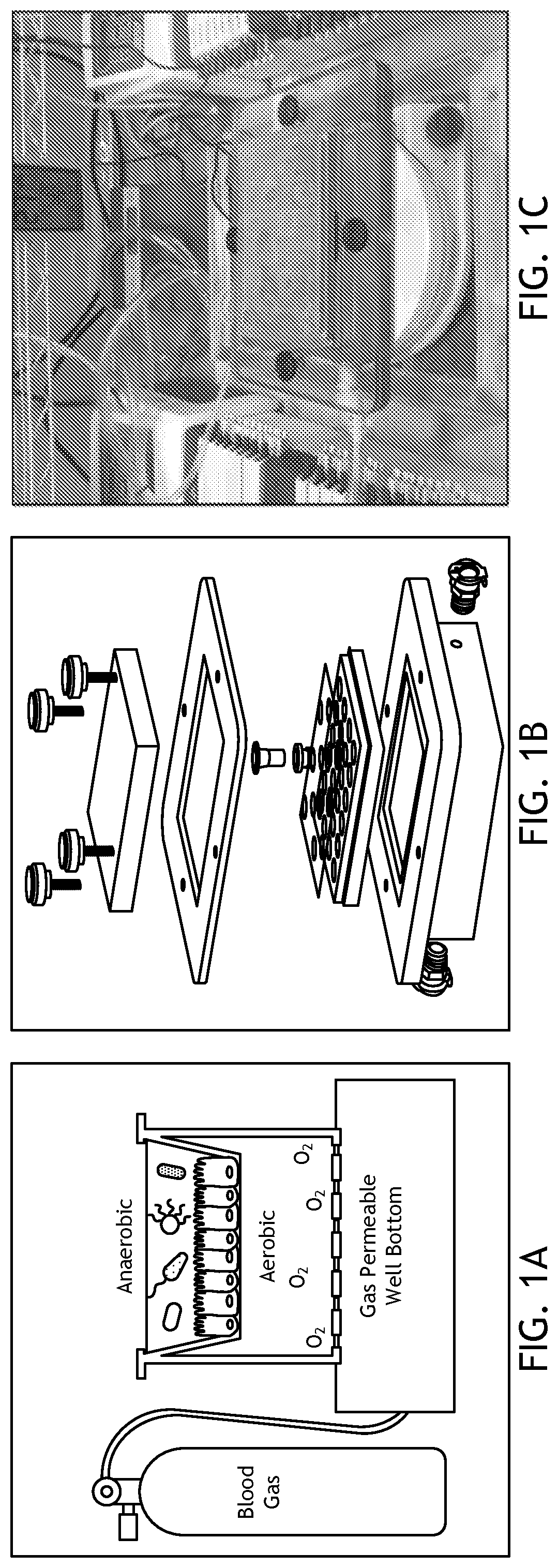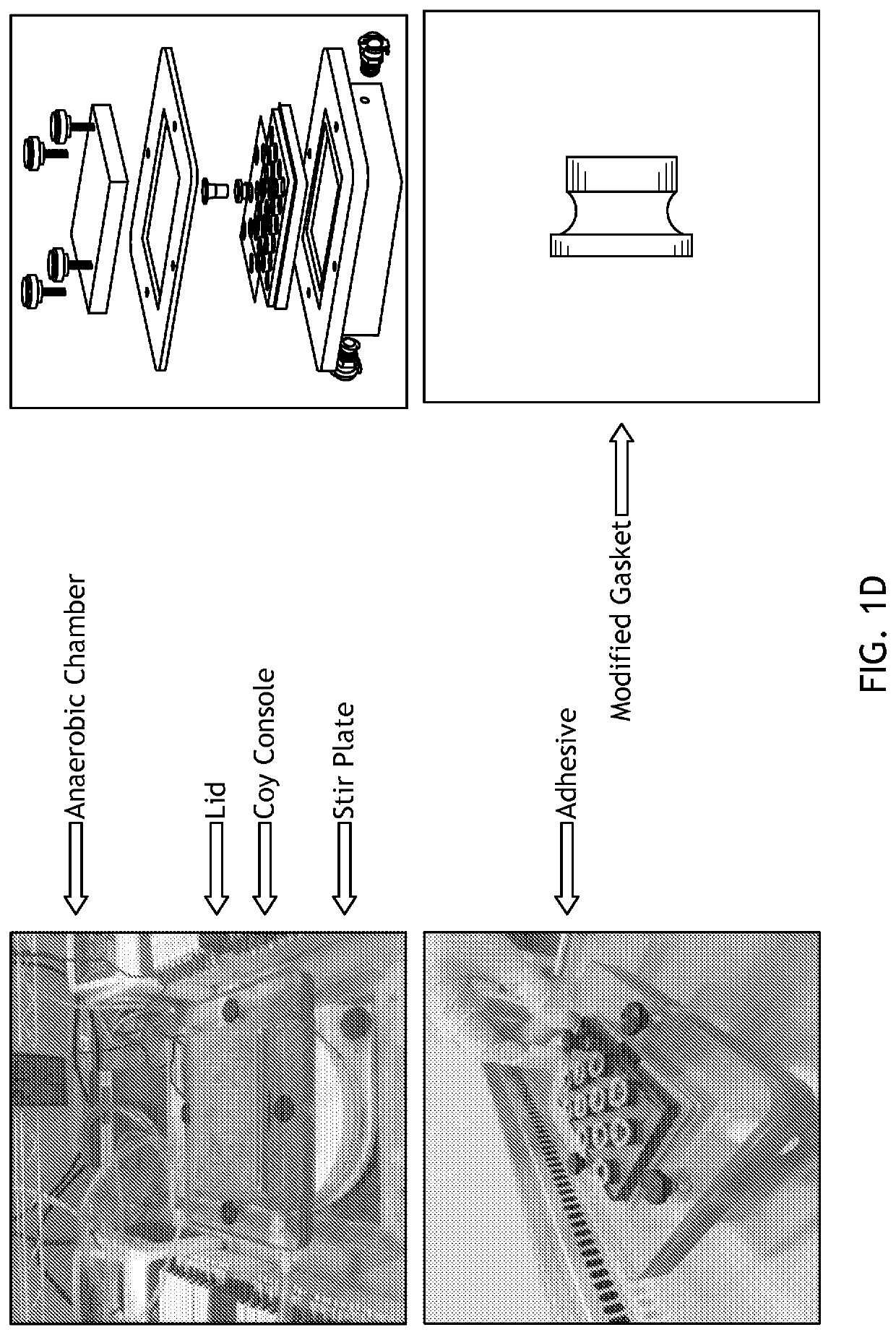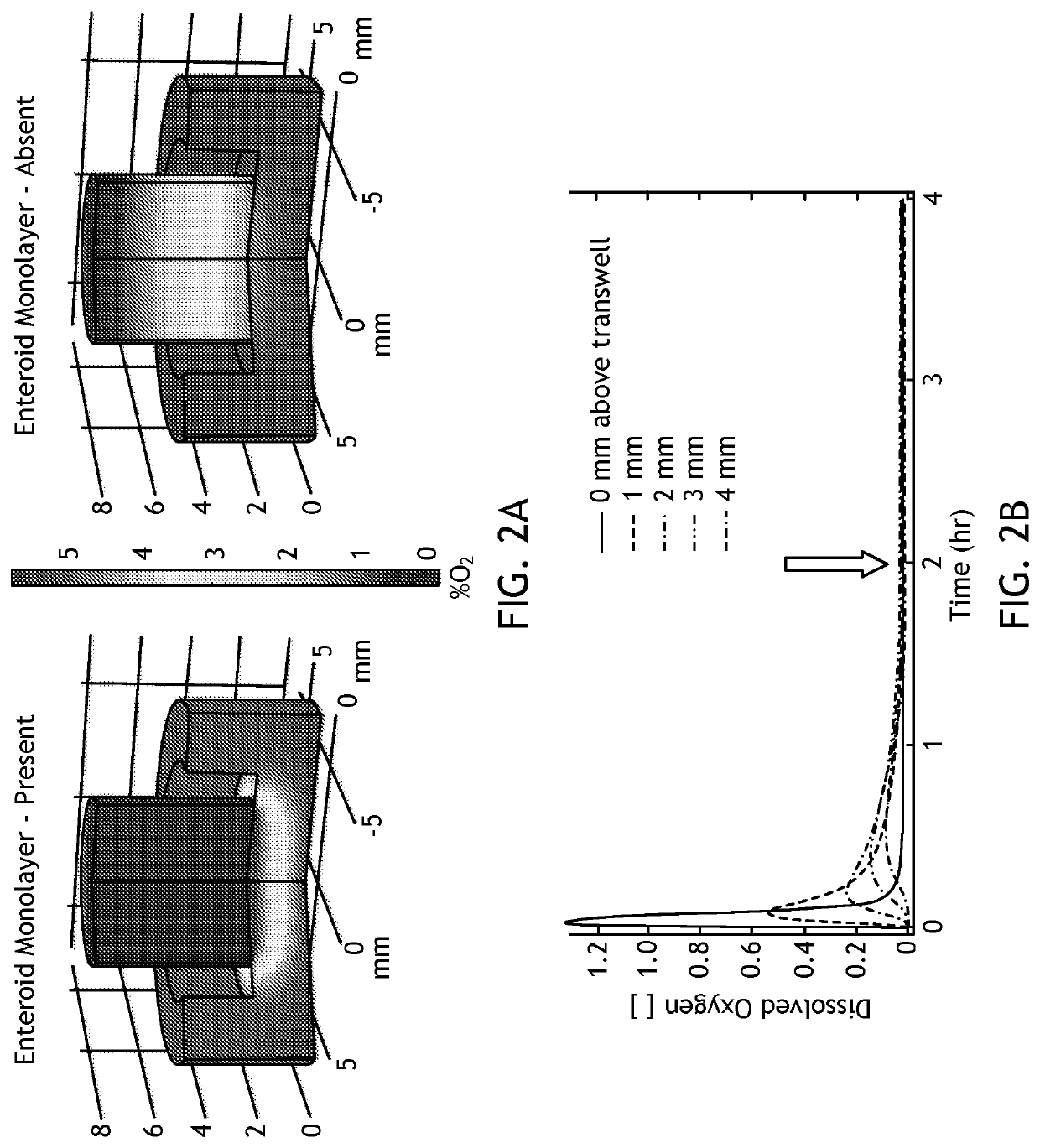Engineering novel enteroid models for understanding human enteric disease
a novel entroid and human disease technology, applied in the field of cell biology, molecular biology, physiology, microbiology, medicine, can solve the problems of difficult to recreate a physiologically relevant intestinal epithelial monolayer, chronic low-grade inflammation of intestinal epithelium, and limited mechanistic investigations of host-microbe interactions in the human gut, so as to improve patient care, influence metabolism and therapeutic success, and simple
- Summary
- Abstract
- Description
- Claims
- Application Information
AI Technical Summary
Benefits of technology
Problems solved by technology
Method used
Image
Examples
example 1
Enteroid-Anaerobe Co-Culture Assembly (EACC)
[0095]Mechanistic investigations of host-microbe interactions in the human gut, both beneficial and pathogenic, are severely limited by current co-culture model systems. There are two principle challenges to in vitro modeling of host-microbe interactions in the gut. First, the intestinal epithelium is oxygen dependent while many gut bacteria are facultative or obligate anaerobes. This creates an incredibly steep oxygen gradient across the epithelial monolayer. Second, the intestinal epithelium is in a state of chronic low-grade hypoxia, which is then dramatically exacerbated in chronic inflammatory conditions such as Inflammatory Bowel Disease (IBD). Hypoxia alters the intestinal epithelium in a variety of ways that impact bacterial invasion and host-microbe interactions. Thus, being able to model host-commensal interactions under dynamic oxygen conditions is critical to understanding host-pathogen interactions in the human gut. There are ...
example 2
Enteroid-Anaerobe Co-Culture Assembly (EACC)
[0097]To address deficiencies in the art, the inventors developed a simple, cost-effective method for co-culturing obligate anaerobic bacteria with human intestinal enteroid monolayers under variable oxygen conditions. In this system, referred to as EACC and as illustrated in FIGS. 1A, 1B, and 1C, enteroids are seeded as monolayers in Transwells®. These slip into modified gaskets that are then sealed in place with a two-sided (gas impermeable) adhesive on a 24-well plate with a gas-permeable base. Gas is pumped from an external tank with defined gas levels through the base of the plate to diffuse into the media and feed the basolateral side of monolayer. In specific embodiments, the entire apparatus is housed in an anaerobic chamber so that anaerobic bacteria can be cultured on the apical surface in standard anaerobic conditions. This allows control of the amount of oxygen supplied to the enteroid monolayers during co-culture. This allows ...
example 3
Exemplary Preparation Method
[0118]One embodiment of a method of producing the co-culture system of the disclosure is provided below.
[0119]Preparation (Day Before)[0120]Autoclave the gaskets, lid (if using custom lid), and test tubes caps (or other holder) using liquid 15 setting.[0121]Allow all elements to cool before proceeding. Using warm gaskets can affect the adhesive seal between gasket and plate during set-up.[0122]Place 5-10 mL of 1:1 BRM and differentiation media in anaerobic chamber overnight to equilibrate (loosen the cap once in the chamber, this will be your apical media)
[0123]Carry Out All Steps Below in a Sterile Tissue Culture Hood
[0124]Setting Up the Console[0125]Place the magnetic stirrer in the inside base of the console[0126]Open the gas permeable tissue culture plate.[0127]Avoid touching / indenting the gas permeable membrane on the base of the plate[0128]Using a 10 ml syringe filled with vacuum grease and with 200 ul pipette tip attached to aid accurate placemen...
PUM
 Login to view more
Login to view more Abstract
Description
Claims
Application Information
 Login to view more
Login to view more - R&D Engineer
- R&D Manager
- IP Professional
- Industry Leading Data Capabilities
- Powerful AI technology
- Patent DNA Extraction
Browse by: Latest US Patents, China's latest patents, Technical Efficacy Thesaurus, Application Domain, Technology Topic.
© 2024 PatSnap. All rights reserved.Legal|Privacy policy|Modern Slavery Act Transparency Statement|Sitemap



